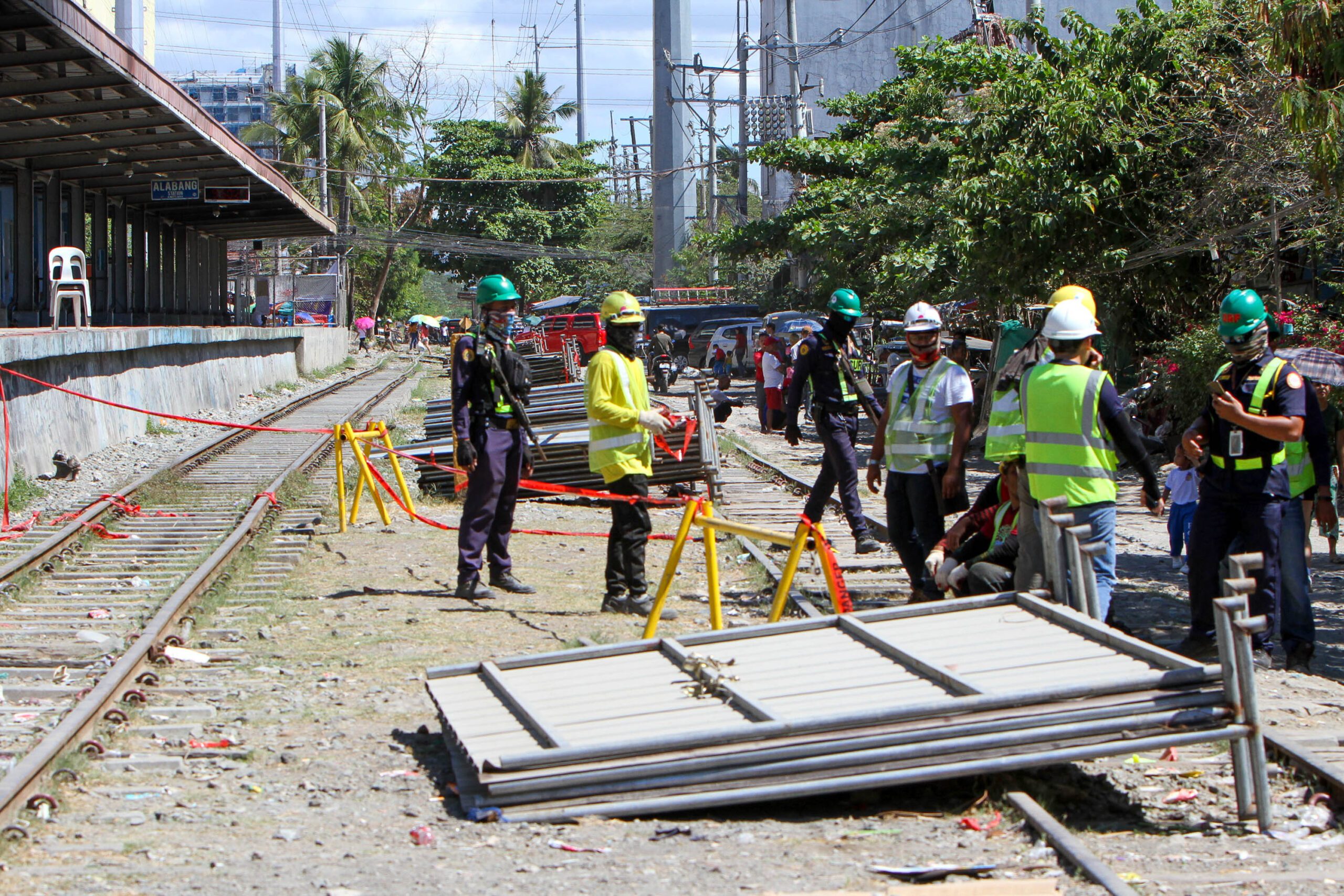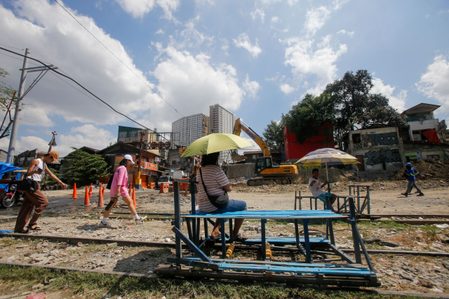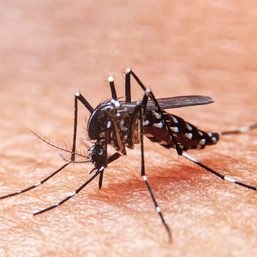SUMMARY
This is AI generated summarization, which may have errors. For context, always refer to the full article.

MANILA, Philippines – As heat indexes stay above 40°C in various parts of the country, labor groups urged employers and lawmakers to create and implement policies specifically catering to workers dealing with heat stress.
Groups representing workers in construction and public services have said that some of their members have suffered heat stroke and difficulty in coping with the heat, whether on the field or in an office.
“Current laws and regulations fall short in addressing the challenges and stresses faced by workers due to extreme heat,” the Nagkaisa labor coalition said on April 10.
The Department of Health (DOH) has advised the public to take precautions as threats of heat-related illnesses rise.
Further vulnerable
Construction workers easily come to mind when imagining sun-exposed labor. But even at times when the heat is not as extreme, construction workers are exposed to various hazards and risks.
Santiago Nolla, secretary general of the National Union of Building and Construction Workers (NUBCW), said construction workers are among the most vulnerable as they are exposed to harsh weather conditions and toxic materials. His group represents more than 3,000 construction workers nationwide.
Now with El Niño, a weather phenomenon that occurs when ocean surface temperatures warm up in the eastern tropical Pacific Ocean, construction workers experience heightened risks.
Nolla said that the union has so far monitored a handful of heat stroke cases in Metro Manila and Central Luzon. Even though the numbers may not indicate a sharp rise, this is still unusual, he noted.
The International Labor Organization uses the term “3D” to describe the hazardous conditions that construction workers regularly face: dirty, difficult, and dangerous conditions.
“Kahit wala tayong El Niño o La Niña, tuwing papasok sila sa trabaho, lagi nga nilang sinasabi na ang isang paa nila nasa hukay na. Kasi hindi mo alam kung lalabas ka pa nang buhay…kasi puwede kang maasksidente anumang oras,” Nolla said in an interview with Rappler on Wednesday, April 17.
(Even if there is no El Niño or La Niña, when they go to work, they always say that they have one foot in the grave. Because you never know if you’re going to come out of it alive…because you might run into an accident at any given time.)
It does not help that many construction workers do not have security of tenure, serving short-term contractual jobs that often do not have social protection and benefits. The NUBCW’s estimate is 95% of the industry with no social security.
Health effects
Annie Geron, president of the Public Services Labor Independent Confederation (PSLINK), said their members have reported heat-related ailments like dizziness, high blood pressure, and dehydration during work. Their confederation represents over 114,000 rank and file employees from public sector worker unions from national government agencies, state and local universities and colleges, government-owned and controlled corporations, and local government units.
The top-of-mind examples Geron gave among their heat-affected members are public school teachers, sanitation inspectors, local healthcare workers, and other government workers who often do field work.
“Yung mga nasa frontline services na pumupunta sa field, nahihirapan sila kasi doon sa pagkukomyut nila, going to and from doon sa kanilang assigned areas…. So hindi naman sila makapamili ng oras kasi ‘yun ‘`yung trabaho nila. Pupunta talaga sila at exposed talaga sila dun sa pagkokomyut at dun sa init ng araw,” she told Rappler on Wednesday.
(Those on frontline services and going to the field, they have a hard time during their commute, going to and from their assigned areas…. They can’t just choose their schedules, because that’s what their job demands. They really have to go, and they are exposed to the heat of the sun when they commute.)
Like Nolla, Geron said that these recent heat-related reports did not usually show up in more neutral temperatures.
How employers can accommodate workers amid heat
In 2023, the Department of Labor and Employment (DOLE) issued Labor Advisory No. 8, which provides for safety and health measures to prevent and control heat stress in workplaces.
In the advisory, employers are directed to assess risk exposure of workers alongside their existing comorbidities and implement control measures like ventilation and heat insulation, and adjustment of rest breaks and work locations to allow recovery from heat exposure, provision of “temperature-appropriate uniforms,” and provision of free and adequate potable water.
The DOLE also advises employers to consider implementing flexible work arrangements to limit workers’ exposure to extreme heat and strenuous activities. This includes the possible adjustment of work hours.
“[Employers must] provide relevant and useful information about heat stress, its symptoms, and how to avoid it, [as well as] implement occupational safety and health programs and have an emergency preparedness and response plan in the event of heat-related incidents,” the Occupational Safety and Health Center said in an email to Rappler.
Nolla said that adjustment of working hours to nighttime would be especially useful for the construction sector, noting that this is occasionally done among road builders for the reason of not disrupting traffic in the day.
“Kakaunti ang maaabala mo, hindi pa masyadong mainit, tapos makapagtrabaho nang maayos ‘yung mga manggagawa. Kasi kung isasabay mo ‘yan ngayon sa panahon ngayon, sobrang init. ‘Yung performance nila hindi na talaga quality,” he said.
(You would bother less people, it isn’t too hot, and the workers would be able to do their jobs better. Because if you make them work amid the weather now, it’s so hot. Their performance will no longer be of quality.)
PSLINK, meanwhile, has a comprehensive list of recommendations for heat-related stress, including:
- Specific guidelines on what to do when experiencing heat stress
- Workers’ compensation for those who suffer from heat stroke and other related illnesses
- Acclimatization, or gradual exposure, of new workers
“Panahon na para kilalanin natin na ‘yung climate change, ‘no? ‘Yung environment, ito na ‘yung kongkretong epekto. Kung baga, kung sa bagyo at saka sa mga calamities, mas severe, ito naman, pagdating doon sa heat, mas mataas,” said Geron.
(Now is the time for us to recognize climate change. This is the concrete effect on our environment. As storms and calamities are more severe, so are heat indexes getting higher.)
The Nagkaisa coalition went beyond employer responsibilities and called for a comprehensive strategy to mitigate impacts of extreme heat on workers. While some collective bargaining agreements address concerns from typhoons, floods, fires, and earthquakes, the coalition said there was a “gap” for heat waves.
The coalition pushed for several bills pending in Congress which may address this, such as Senate Bill 652 that sought a five-day special emergency leave, House Bill 988 for an increased incentive leave, and House Bill 663 proposing a two-day calamity leave.
“By advocating for a unified and robust policy that includes provisions for heat waves… Nagkaisa is championing a proactive and protective stance for the health and welfare of Filipino workers against the evolving challenges posed by climate change,” said Nagkaisa chairperson Sonny Matula. – Rappler.com
Add a comment
How does this make you feel?











There are no comments yet. Add your comment to start the conversation.